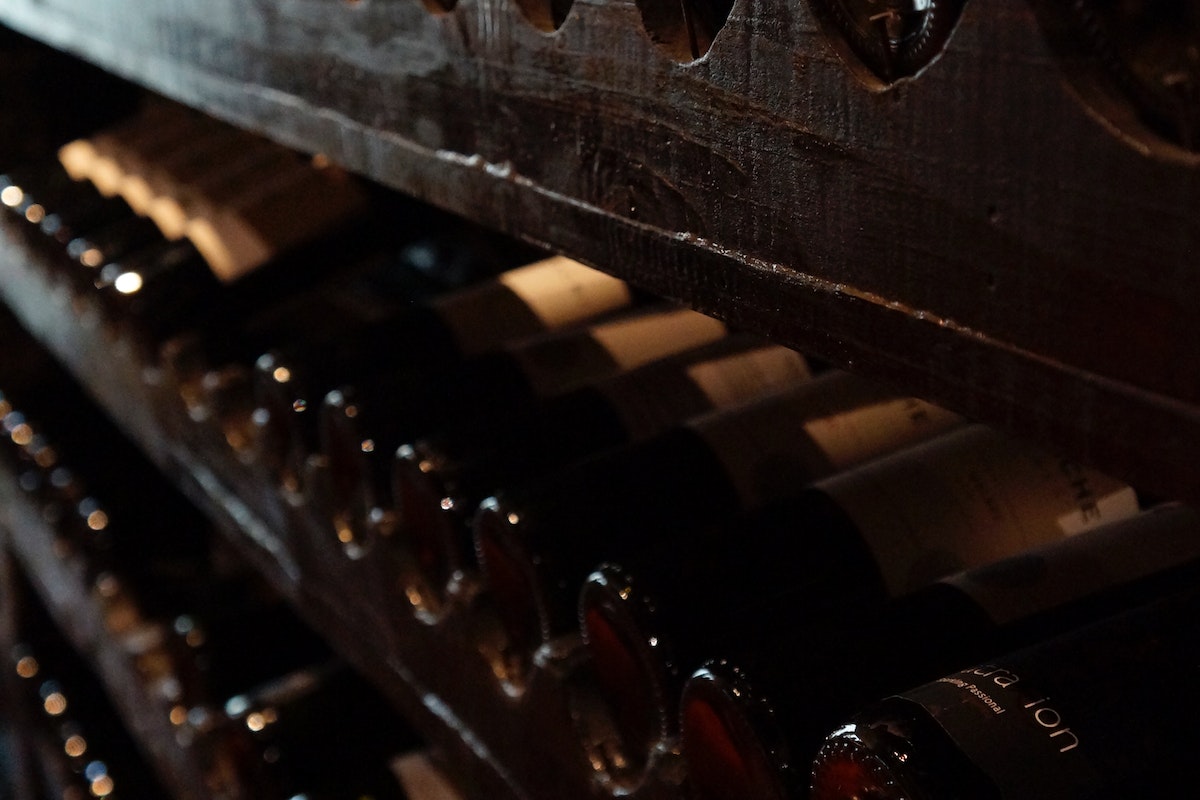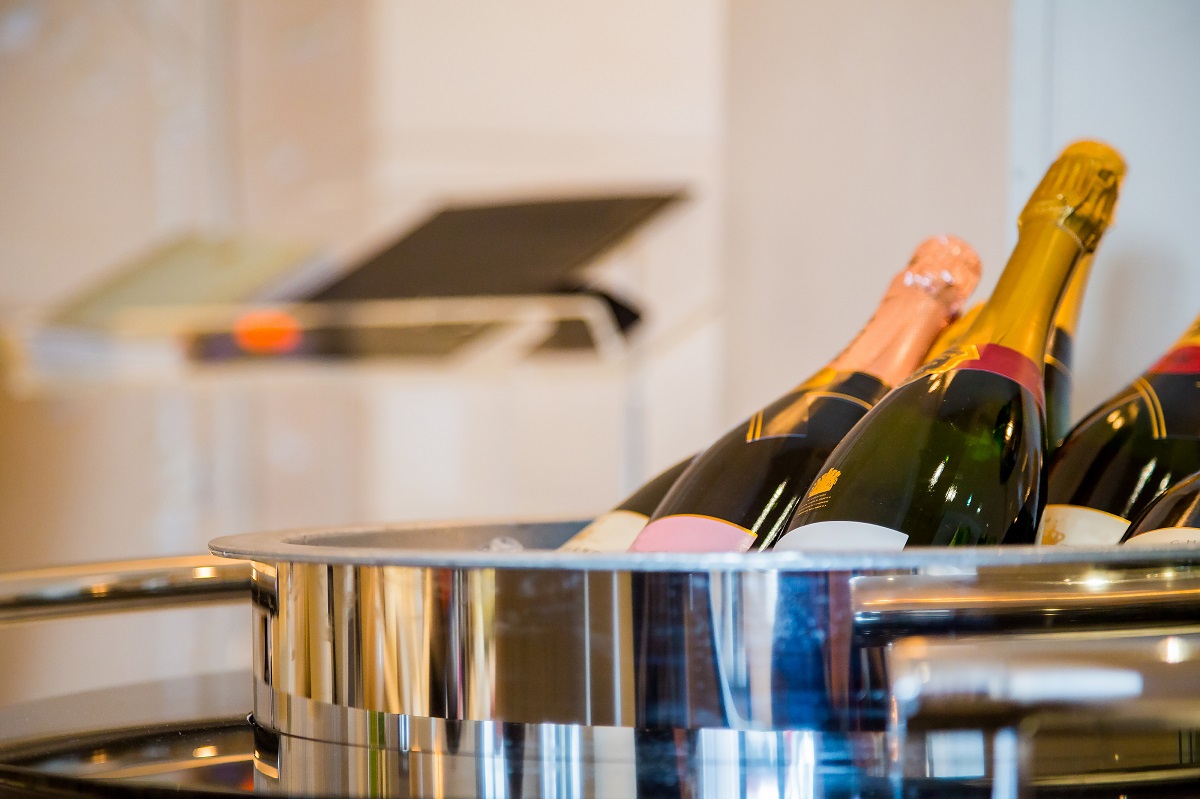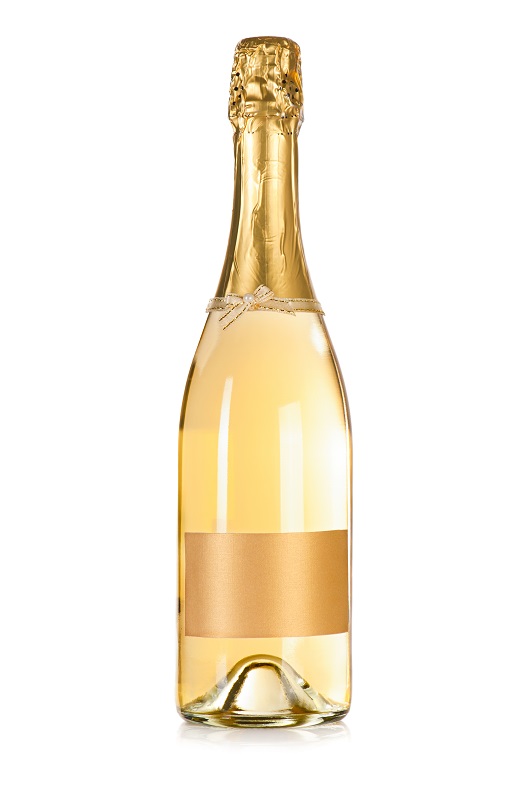Champagne, the epitome of celebration and luxury, requires meticulous care regarding storage at home. With its delicate bubbles and nuanced flavors, the proper storage of this sophisticated beverage can significantly affect its taste and longevity. This guide aims to provide comprehensive information about storing champagne at home, ensuring that each bottle you open is at its peak of taste and quality. Whether you’re a seasoned champagne collector or a novice enthusiast, you’ll find valuable insights on maintaining the effervescence and flavor of your precious bottles.

Why is proper champagne storage essential?
The importance of proper champagne storage
Champagne is a nuanced drink that requires specific conditions to bring out its full flavor and complexity. Too hot, too cold, or improper storage can all lead to premature aging and oxidation of the champagne, as well as flattening of its bubbles. This means that if you don’t store your champagne in the right environment, you won’t be able to enjoy it to its fullest.
You might also find that storing champagne in the wrong conditions will shorten its shelf life. Depending on the type of champagne, it may only last for a few months or even weeks if not stored properly. Investing in proper storage is thus essential to get the most out of your bottle and ensure that it remains fresh for as long as possible.
Factors affecting champagne quality
When it comes to storing champagne, a few key factors can affect the quality of your favorite bubbly beverage.
The most important factor is temperature. Champagne must be stored in a cool, dry place. A certain temperature range is ideal for preserving the flavor and bubbles of champagne. If you store it in a place that’s too warm, the champagne will age faster, resulting in a loss of effervescence and flavor. On the other hand, storing champagne at a too-cold temperature can cause sediment to form, which is not ideal for enjoying the full taste of your bottle.
It’s also important to keep your champagne away from direct sunlight and other sources of heat as they are photosensitive. Prolonged exposure to UV rays can also cause the champagne to age faster and lose its flavor.
Humidity levels should also be taken into consideration when storing champagne. Too much moisture in the air can cause oxidation, resulting in a loss of sweetness and flavor. To avoid this, it’s best to store champagne in an environment with low humidity levels.
Finally, the orientation of your bottles is also important. To ensure that sediment doesn’t form, storing them in the right way will help keep the cork wet and preserve its flavor.
Where should I store champagne at home?
Ideal storage conditions
Given the factors that can affect the quality of your champagne, it’s important to choose an area in your house that meets certain criteria.
The ideal temperature for champagne storage is between 53-57 degrees Fahrenheit. This range allows you to preserve the flavor and effervescence of your champagne without risking premature aging or sediment formation. To maintain this temperature range, you’ll want to find a cool and dry place in your home, like a basement or cellar, which should be free from direct sources of light and heat.
When it comes to humidity, the ideal range should be between 60-70 percent. If the area is too damp or humid, the cork will get wet, leading to oxidation of the champagne and a loss of flavor. On the other hand, if the area is too dry, then your champagne may age prematurely.
Finally, a good place to store your champagne should be free from direct sunlight. Look for an area not exposed to UV rays, as prolonged exposure can cause the champagne to age faster. You might also opt to buy a special cabinet or box for storing your bottles, as these can help protect them from light and temperature fluctuations.
Suitable places in the home

Depending on the size of your collection, you can store champagne in several places in the home. If you have an extensive collection of champagne, then a wine cellar may be the ideal storage choice. Create an environment that meets all the above criteria (cool and dry with low humidity) by installing climate-controlled units or using specific materials like cork or sand to maintain a consistent temperature.
For smaller collections, you might opt for a wine fridge, which is specially designed for storing champagne and other wines at an optimal temperature. This kind of fridge usually has adjustable shelves and racks, allowing you to properly position your bottles for maximum preservation.
You can also find smaller units like thermoelectric coolers or wine chillers. These are ideal for storing a few bottles at a time and come with temperature settings that allow you to reach the desired range.
If you don’t have room for any of the above, then a closet may be an option. Look for a dark and dry area in your home that remains at a consistent temperature and doesn’t get too hot or cold. Avoid storing wine near appliances like stoves and washers, as these can cause rapid fluctuations in temperature, which will affect the flavor and quality of your champagne.
Should champagne bottles be stored vertically or horizontally?
As mentioned, orientation is an important factor to consider when storing champagne. If you think about it, you always see champagne bottles stored horizontally in wine shops and liquor stores. The reason for this is simple: horizontal storage helps keep the cork moist, preventing it from drying out and allowing carbon dioxide to escape. This keeps the champagne fresh and prevents sediment buildup.
Vertical storage, on the other hand, can result in a dry cork and loss of flavor. Furthermore, leaving champagne bottles upright for extended periods of time can cause sediment to settle at the neck of the bottle, making it difficult to pour without disturbing the sediment.
For optimal preservation and flavor, store your champagne horizontally in an area that meets all the criteria outlined in this guide. With proper storage, your favorite bottle of champagne will remain fresh and flavorful for longer, allowing you to enjoy it at its best.
How long can I store unopened champagne bottles?
Ideal duration for storage
Champagne has a relatively short shelf life compared to other wines. Generally, non-vintage champagne should be consumed within 3-4 years, while vintage champagne can last for up to 10 years with proper storage.
To ensure that your champagne remains fresh and flavorful, it’s best to store it in an area with ideal conditions, as outlined above. Even if you do this, the champagne will eventually start to lose its flavor as it ages. It’s thus important to keep track of how long you’ve had each bottle and check for any signs of oxidation or loss of effervescence before opening it.
Best practices to preserve flavor and carbonation
To maximize the shelf life of your champagne and preserve its flavor and effervescence, make sure to store it in a cool, dark place. As discussed earlier, this should ideally be between 53-57 degrees Fahrenheit and have low humidity levels.
Avoid storing champagne for too long, as prolonged storage can lead to premature aging and a loss of flavor. When you open the champagne, it’s best to store any remaining bottles in the fridge for up to 5 days before finishing them. This will help keep the cork wet and minimize oxidation.
Can I store opened champagne bottles?
While it’s best to consume champagne within a few days after opening, you can extend its shelf life by properly storing any leftover bottles.
The best way to do this is to transfer the contents of the bottle into smaller glass containers with tight-fitting lids. This will minimize oxidation and keep the champagne fresh for up to one week. You might also consider adding a few drops of neutral spirits, like vodka or brandy, to the bottle before sealing it. This will help preserve the champagne and keep the bubbles from dissipating quickly.
Be sure to store any opened bottles in the fridge away from light and direct heat sources. If properly stored, you may be able to enjoy your leftover champagne for up to a week after opening.
What can I do to prevent spoilage?
If stored properly, champagne can last for months or even years without spoiling. But if you store your bottles in an unsuitable environment with too much heat, light, or moisture, your champagne may spoil prematurely.
To prevent spoilage and keep your champagne fresh for longer, follow all the guidelines outlined in this guide. Always store your champagne in a cool, dry place away from direct sunlight and other heat sources. Avoid leaving bottles in the fridge for too long, and check regularly for signs of oxidation or sediment buildup.
Additionally, you may want to invest in special boxes or cabinets designed specifically for storing champagne. These come with temperature control settings and thick insulation that can help protect your champagne from light and temperature fluctuations.
What are the signs of spoiled champagne?
You should know the signs of spoiled champagne and take steps to prevent it from happening.
A few signs that your champagne has gone bad include a sour or musty smell, loss of effervescence, a sour after taste, and a flat flavor. Although color can vary from champagne to champagne, you may find that spoiled bottles have a darker hue than usual. When in doubt, it’s best to discard the champagne and replace it with a fresh bottle.
It’s also important to keep an eye out for sediment buildup in the bottle. If you see any granules collecting at the neck or the bottom of the bottle, you should discard it as this is a sign that your champagne has been stored improperly and has gone bad.
If you notice any of these signs, then it’s best to discard the bottle and invest in proper storage for your other bottles. Taking care of your champagne is essential to enjoy it at its peak and avoid premature spoilage.
How should I properly serve and enjoy stored champagne?

When it comes to serving champagne, you’ll want to use proper stemware that is specifically designed for sparkling wines. This type of glass has a wide bowl and narrow mouth, which helps maintain the temperature and effervescence of the champagne.
A good way to keep your champagne chilled is by using a cooler or ice bucket. This allows you to maintain an ideal temperature and preserve the flavor of the champagne for longer.
Finally, when pouring the champagne, be sure to gently tilt the glass so that only a small amount is poured at a time. This prevents the carbon dioxide from escaping too quickly, allowing you to enjoy your champagne with its signature bubbles intact.
FAQs
What is the correct way to store champagne?
The best way to store champagne is in a cool, dry place that offers consistent temperatures between 53-51 degrees Fahrenheit, away from direct sunlight and heat-emitting appliances like stoves and washers. The ideal humidity level should be between 60-70 percent. Finally, always store your bottles horizontally to prevent the cork from drying out and allow carbon dioxide to remain trapped in the bottle.
Is champagne supposed to be refrigerated?
The ideal temperature range for storage is 45-55 degrees Fahrenheit (7-12 degrees Celsius). This helps preserve the flavors and keep any sediment from forming. However, you should avoid leaving opened bottles in the fridge for too long, as this can lead to oxidation and a loss of flavor.
Will champagne go bad if not refrigerated?
Champagne can go bad if not stored properly. To ensure the best flavor and quality of your bottle, store it in a cool, dry place away from direct sunlight and sources of heat. Pay close attention to how long you’ve had it and check regularly for signs of spoilage or oxidation.
How long can champagne be kept?
Non-vintage champagne should be consumed within 2-3 years, while vintage champagne can last for up to 10 years with proper storage. It’s important to keep track of how long you’ve had your bottle and check for any signs of oxidation or sediment buildup before opening it.
Does champagne expire?
Champagne has a relatively short shelf life compared to other wines. To maximize its shelf life and preserve its flavor and effervescence, store it in an area that meets all the criteria outlined in this guide. If properly stored, you may be able to enjoy your champagne for up to 10 years, though it’s best to consume bottles within 3-4 years for optimal flavor.

